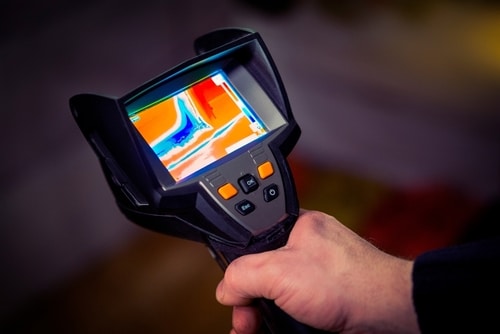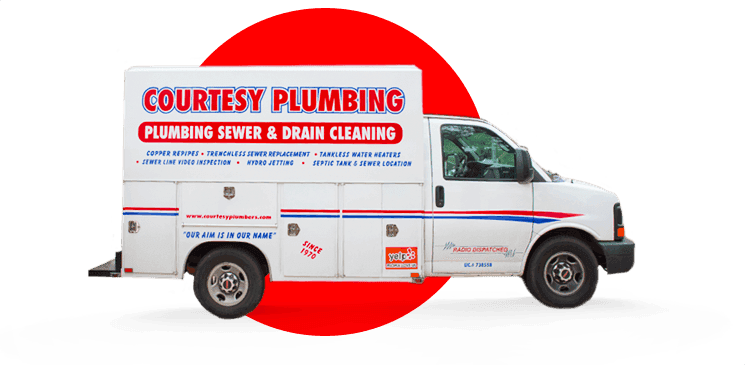When it comes to leak detection, finding the most effective method is essential to prevent any further damage and costly repairs. With a multitude of options available, it can be difficult to determine which method is best suited for the task at hand. In this article, we will explore the various techniques commonly employed for leak detection, allowing you to make an informed decision.
From traditional methods like visual inspection and manual pressure testing to modern technological advancements such as acoustic leak detection and thermal imaging, each approach has its own advantages and limitations. We will delve into the pros and cons of each technique, providing you with a comprehensive overview of their capabilities.
Whether you’re dealing with a leak in your home, business premises, or industrial setting, understanding the different detection methods available can save you valuable time and resources. By the end of this article, you’ll be equipped with the knowledge needed to identify the best method for your specific leak detection needs, ensuring prompt and accurate detection for swift resolution.
The importance of leak detection
Leak detection is a crucial aspect of property maintenance, as it helps identify and address leaks before they escalate into major issues. Undetected leaks can lead to structural damage, mold growth, and even health hazards. By promptly identifying and fixing leaks, you can mitigate these risks and prevent costly repairs down the line.
It’s important to note that not all leaks are easily noticeable. While some leaks may be visible, such as dripping faucets or water stains on walls, others can be hidden behind walls, underground, or within pipes. This is where leak detection methods come into play, enabling you to locate the source of the leak accurately.
Common signs of leaks
Before diving into the different leak detection methods, it’s essential to familiarize yourself with the common signs that indicate the presence of a leak. By being aware of these signs, you can take early action and prevent further damage.
- Unusual water bills: A sudden increase in your water bill without any explanation can be a sign of a hidden leak. If you notice a significant spike in your water usage, it’s worth investigating further to rule out any leaks.
- Damp or musty odor: If you notice a persistent damp or musty odor in a certain area of your property, it could indicate the presence of a hidden leak. This is often accompanied by the growth of mold or mildew.
- Water stains: Yellow or brownish stains on ceilings, walls, or floors can be a clear indicator of a leak. These stains are often caused by water seeping through cracks or gaps in the infrastructure.
- Decreased water pressure: If you experience a sudden drop in water pressure, it could be a sign of a leak. Leaks can disrupt the flow of water, leading to reduced pressure in faucets, showers, or other water outlets.
- Sounds of running water: If you can hear the sound of running water when all faucets and appliances are turned off, it could indicate a leak. This is especially noticeable during quiet hours when background noise is minimal.
Now that we’ve covered the common signs of leaks, let’s explore the different methods used for leak detection.
Methods for leak detection
Visual inspection
Visual inspection is one of the most basic and straightforward methods of leak detection. It involves visually examining the area suspected of having a leak to identify any visible signs, such as dripping water, wet spots, or discoloration. This method is especially useful for detecting leaks in exposed pipes or plumbing fixtures.
Pros: – Simple and easy to perform. – Can quickly identify visible leaks. – Does not require specialized equipment.
Cons: – Limited to detecting visible leaks only. – Cannot detect hidden leaks or leaks in inaccessible areas. – Relies heavily on the observer’s experience and keen eye.
Pressure testing
Pressure testing is a more advanced method that involves pressurizing the plumbing system to identify any leaks. This method is commonly used in new construction or when there is suspicion of a leak in the entire system. Pressure testing can be done using air or water, depending on the specific requirements.
Pros: – Can detect both visible and hidden leaks. – Provides a comprehensive assessment of the entire plumbing system. – Can be used to pinpoint the location of leaks accurately.
Cons: – Requires specialized equipment and expertise. – May not be suitable for older or fragile plumbing systems. – Can be time-consuming and disruptive, as the system needs to be pressurized and monitored.
Smoke testing
Smoke testing involves introducing non-toxic smoke into the plumbing system to identify leaks. The smoke is pressurized and forced through the pipes, escaping through any cracks or openings. This method is particularly effective for locating hard-to-find leaks, such as those hidden behind walls or underground.
Pros: – Can detect leaks in inaccessible areas. – Provides visual confirmation of leaks through the presence of smoke. – Non-invasive and does not require extensive dismantling or excavation.
Cons: – Requires specialized equipment and trained professionals. – May not be suitable for sensitive environments or buildings with smoke-sensitive systems. – Limited to identifying leaks in the plumbing system only.
Infrared thermography
Infrared thermography utilizes thermal imaging cameras to detect temperature variations caused by leaks. The cameras capture infrared radiation emitted from objects, allowing for the identification of temperature anomalies that may indicate the presence of a leak. This method is highly effective for detecting hidden leaks behind walls or under floors.
Pros: – Can detect hidden leaks without the need for physical access. – Provides visual evidence of leaks through temperature variations. – Allows for quick and non-destructive leak detection.
Cons: – Requires specialized equipment and trained professionals. – May be affected by external factors, such as ambient temperature or reflective surfaces. – Accuracy can be influenced by the distance between the camera and the target area.
Acoustic leak detection
Acoustic leak detection involves using sensitive microphones to detect the sound of water escaping from pipes or plumbing fixtures. This method relies on the principle that water leaks produce distinct sounds, such as hissing or dripping, which can be picked up by the microphones. Acoustic leak detection is particularly useful for pinpointing the exact location of hidden leaks.
Pros: – Can detect hidden leaks in walls, underground, or under floors. – Provides accurate location information for targeted repairs. – Non-invasive and does not require extensive dismantling or excavation.
Cons: – Requires specialized equipment and trained professionals. – May be affected by background noise or interference. – Limited to detecting leaks that produce audible sounds.
Choosing the best method for your needs
Now that we’ve explored the various methods for leak detection, you may be wondering which one is the best choice for your specific needs. The answer depends on several factors, such as the type of property, the suspected location of the leak, and your budget.
For simple and visible leaks, visual inspection may be sufficient. However, if you suspect a hidden leak or need a comprehensive assessment of your plumbing system, pressure testing or infrared thermography would be more appropriate. Smoke testing and acoustic leak detection are ideal for identifying leaks in hard-to-reach areas or when pinpoint accuracy is required.
It’s worth noting that in some cases, a combination of methods may be necessary to ensure thorough leak detection. Consulting with a professional leak detection service can help you determine the most suitable approach for your specific situation.
Conclusion
Leak detection is a critical aspect of property maintenance, and choosing the right method is essential for prompt and accurate detection. From visual inspection and pressure testing to smoke testing, infrared thermography, and acoustic leak detection, each technique offers its own advantages and limitations.
By understanding the capabilities of each method and considering your specific leak detection needs, you can make an informed decision on the most effective approach. Remember to consult with a professional plumber if you’re unsure or dealing with complex leak detection scenarios.
Investing in leak detection can save you valuable time, resources, and potential damage in the long run. By addressing leaks promptly, you can ensure the integrity of your property and avoid costly repairs. So, take the necessary steps to detect and resolve leaks early on, protecting your property and maintaining peace of mind.



